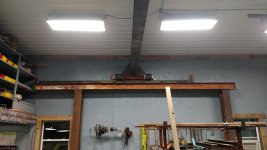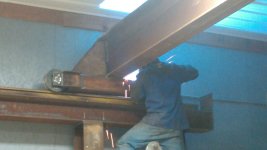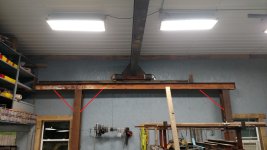SPYDERLK
Super Star Member
- Joined
- Feb 28, 2006
- Messages
- 12,525
- Location
- VA
- Tractor
- JD2010, Kubota3450,2550, Mahindra 7520 w FEL w Skid Steer QC w/Tilt Tatch, & BH, BX1500
Perhaps you know what that all means; while I have to guess. Aside from WTF on the color code and symbols and other jargon, my guess is that you have made assumptions about scab thickness, taper start point away from the butt weld, and taper angles.First of all take this info for what you paid for it. Which was nothing. In other words its for discussion only.
Attached you will find FEA of OPs spliced beam... using tapered and square scab plates. Note hot spots at points of scab plate. With that being said, highest stress is at butt welds between two beams and not at scab plates.
Also I've included approx safety factor at 10,000 lbs with indicated loading... around 1.1. OP should inspect rail at butt weld joint for possible fractures. Proceed at your own risk. Not sure what you are gonna rate this crane at but be careful. Cranes are serious business.
Good day.
View attachment 448277View attachment 448278View attachment 448279View attachment 448280View attachment 448281
... Why would the butt welds be an issue? The scab plates span them and spare the butt welds from excessive stress by sharing the load.





